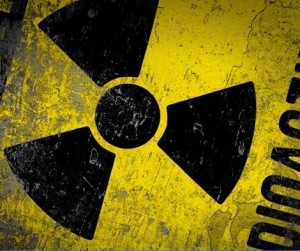President Obama has repeatedly said his top counterterrorism goal is to prevent terrorists from acquiring the building blocks to make nuclear or “dirty” bombs. In April of 2009, Obama announced a new international effort to “secure all vulnerable nuclear material around the world within four years.” Since then, the Department of Energy has dispatched scientists around the globe to collect hundreds of pounds of the stuff.
But according to a report from the Government Accountability Office (GAO), issued late last Friday afternoon to little fanfare, thousands of pounds of highly-enriched uranium and separated plutonium remain. American officials may never get a chance to ensure its security.
That’s because the
U.S. can’t track or fully account for 5,900 pounds of “weapons usable” nuclear material that it once shipped overseas. Instead, U.S. officials have to rely on foreign governments’ assurances that the potentially cataclysmic stuff is safe. And when those officials occasionally visit the sites holding the nuclear material, nearly half the places “did not meet International Atomic Energy Agency security guidelines,” according to the GAO, Congress’ investigative arm.
“It’s amazing how completely cavalier the Department of Energy has been at tracking this. They’ve got nobody who worries about this on a day-to-day basis,” says Jeffrey Lewis, a nuclear weapons analyst at the Monterey Institute of International Studies (and occasional contributor to this blog).
The Energy Department, not surprisingly, has a different perspective. Foreign governments have pledged to report on the security of the their fissile material. There are international inspectors to keep those governments honest. And the GAO hasn’t reported that any uranium or plutonium has gone missing — just that certain guidelines may not have been yet.
“Between the International Atomic Energy Agency inspections and the reporting requirements, we think those safeguards are effective and internationally sanctioned,” Josh McConaha, a spokesman for the Energy Department’s National Nuclear Security Administration, tells Danger Room.
Starting in the Eisenhower administration, the
U.S. sold 17,500 kilograms, or 38,5000 pounds, of fissile material overseas, mostly to help with civilian nuclear energy programs. Those sales came with conditions, however: countries had to keep the dangerous material safe; they couldn’t use it for weapons; and the U.S. had the option of taking back the radioactive stuff — someday, somehow.
But 12,400 of those 17,500 kilograms can’t be returned. It’s mostly in the hands — and reactors — of close allies like Germany, France, and Japan. 1,160 kilograms have been accounted for, and another 1,240 kg have been secured by the Energy Department’s “Global Threat Reduction Initiative,” an effort to covert nuclear power facilities from highly-enriched to low-enriched uranium, which is far less dangerous.
Still, don’t assume that just because the nuke material is at our friends’ houses means it is completely secure. One source familiar with the report’s development says, “If this was in some former Soviet republic, we’d be there in a heartbeat.” Some of America’s closest allies may be the ones with the poorest nuclear security precautions.
And there’s just one other problem. Subtracting all the nuke material that’s been accounted for and secured still leaves 2,700 kg — nearly three tons — outstanding. And that’s enough material to make dozens of nuclear weapons.
Where that uranium and plutonium is located — or, where it’s supposed to be located — the GAO report doesn’t say. That information was considered too sensitive to disclose in a public document, and was instead laid out in a classified report sent to Congress over the summer. But it’s worth noting that the U.S. currently has 27 so-called “Nuclear Cooperation Agreements” with 27 countries, from China to Ukraine to Colombia. America previously had similar deals with 11 other countries — including Israel, Pakistan, Venezuela, Vietnam, and Iran.
“Theoretically, we know [where the nuclear material is kept].
But we don’t have a good accounting of where it all is. We’re relying on them. We’re not, to coin a phrase, trusting but verifying,” the source says.
Occasionally, American inspectors will travel to these sites, to make sure these sites have the proper fences and surveillance gear needed to keep their nuclear material safe. The track record wasn’t particularly encouraging. Of those 55 visits conducted between 1994 and 2010, “physical protection teams found the sites met IAEA [International Atomic Energy Agency] security guidelines on 27 visits, did not meet IAEA security guidelines on 21 visits, and the results of 7 visits are unknown because the physical protection team was unable to assess the sites, or agency documentation was missing,” the report notes.
Partially, this alarming GAO report is an outgrowth of shifting standards. The U.S. is demanding more security and more accountability, to cope with a world in which terrorists have nuclear ambitions — and 20 major atomic smugglers has been caught in the last two decades. Many countries haven’t caught up with those changes.
“The old way of doing business was: You bought it. We have some rights, but it’s fundamentally not our problem,” Lewis says. “Now, things are different.”
Story from Wired:
https://www.wired.com/dangerroom/2011/09/uranium-mia/
 "the solution to (Fukushima Radiation) pollution is in fact dilution."
"the solution to (Fukushima Radiation) pollution is in fact dilution." 















